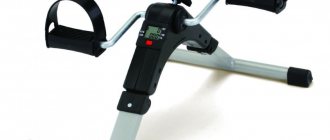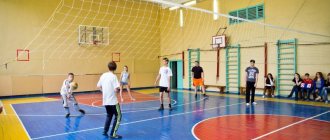The loads most often considered when calculating building structures are the masses of bodies (and not always only physical mass, but sometimes also inertial mass, but more on that a little later) and pressure difference. But this is not all that can be said about loads.
In theoretical mechanics and strength of strength materials, it is customary to distinguish loads acting on calculated structures or structural elements according to various criteria. One of these signs is the duration of the load. Based on the duration of action, loads are divided into permanent and temporary:
Constant loads
Loads acting on a structure during the entire life of the structure, be it one second or one thousand years.
As a rule, only the load from the structure’s own weight is classified as permanent loads. For example, for a strip foundation, the constant load will be the own weight of all elements of the building, and for a floor truss - the own weight of the upper and lower chords, racks, braces and connecting elements. At the same time, for stone or reinforced concrete elements, the load from its own weight can be more than half of the design load, and when calculating the foundation, even 90%, and for metal and wooden structures of coatings and floors, the load from its own weight usually does not exceed 3-10%.
Live loads
These are all other loads acting on the structure.
In turn, temporary loads are usually divided into long-term and short-term:
Long-term loads
Loads - the duration of which is significantly greater than the time during which deformations occur in the structure under the influence of these loads.
The fact is that any body, including the human body, is deformed under the influence of loads, i.e. the geometric parameters of the body change, such as length, width, height, straightness of axes, etc., and this can directly affect the operation of the element in question. For example, when, when calculating strength (calculation according to group 1 of limit states), we draw up equilibrium equations for a beam considered as a straight rod, then we do not take into account the influence of deformations. Deformations are taken into account when calculating for group 2 limit states. So, the deformation of any body is not an instantaneous process. Simply put, it takes time for a material to deform, and the greater the inertial mass of the element in question, the more time it takes to deform. For example, for a light material, such as a burlap ship sail, a gust of wind can be considered a long-term load, but for a stone wall 1 meter thick, the same gust of wind can be considered a short-term load. Therefore, the division into long-term and short-term loads is quite arbitrary and depends on the inertial mass of the material in question. In addition, other factors that influence the time of development of deformations should be taken into account. For example, the deformation time of subsiding or heaving soils can be measured in weeks or even months, therefore the load from snow lying on the roof of a building for several days can be considered short-term when calculating the foundation. But when calculating the roofing, this same load should be considered as long-term.
Short-term loads
Loads - the duration of which is comparable to the time during which the structure is deformed under the influence of these loads.
But in this case, to describe a short-term load, only the time of action is not enough, because if you carefully place a bag of cement on the floor for 1 second, this is one load, and if you drop the same bag of cement on the floor from a height of 1 meter, with In this case, the contact time of the bag with the floor will still be the same 1 second, but this will be a completely different load.
To more accurately determine the loads, they are further divided into static and dynamic.
Pressure on disks in percent
Pressure on intervertebral discs (percentage of standing position)
- lying on your back 25%
- lying on side 75%
- standing 100%
- standing, bending forward 150%
- standing, leaning forward, weight 220% in hands
- sitting 140%
- sitting with a forward lean 185%
- sitting leaning forward, weight in hands 275%
Avoid overly soft furniture. To prevent body weight from putting excessive pressure on the spine, the body must rest on the ischial tuberosities, and this is only possible on hard seats.
The following requirements apply to everyday furniture on which you sit:
- The height of the chair or armchair corresponds to the length of the lower leg - the leg must rest on the floor. For small people, it is recommended to place a stool under their feet. The knee is bent at a right angle.
- maximum depth approximately 2/3 of the length of the thighs.
- There is enough space for the legs under the table so that they do not need to be bent too much.
- If you have to sit for a long time, try every 15 to 20 minutes. warm up, change the position of your legs.
- Make sure your back is tightly against the back of the chair.
- Sit straight without tilting your head or bending your torso, so as not to strain your body muscles.
- If you have to read for a long time every day, make a device on the table (lectern) that supports the book at a sufficient height and inclined to the table so that the upper body does not have to be tilted forward.
- Try to sit without tension while driving a car. It is important that your back is supported. To do this, place a thin cushion between the lower back and the back of the chair, which will allow you to maintain the lumbar bend.
- Keep your head straight. After several hours of driving (if possible), get out of the car and do simple gymnastic exercises: turns, bends, squats - 8-10 times each.
- Do not sit or lie in one position in front of the TV screen. Change it periodically and get up to stretch. sit for 40-50 minutes, lean back in a chair or armchair, relax your muscles, take 4-5 deep breaths.
When a person stands for a long time, the musculoskeletal system experiences increased stress, especially the lumbar region.
- change your position every 10-15 minutes, leaning on one leg or the other, this will reduce the load on the spine.
- If possible, walk in place, move.
- From time to time, bend back, stretching your arms up, take a deep breath. This can slightly relieve fatigue from the muscles of the shoulder girdle, neck, back of the head, and back.
- when washing dishes, ironing clothes, etc., alternately place one or the other foot on a small bench or drawer. For those suffering from osteochondrosis, it is better to iron while sitting or placing an ironing board so that you do not have to bend low.
- When cleaning the apartment and working with a vacuum cleaner, also try not to bend low; it is better to extend the hose with additional tubes. When cleaning under the bed, stand on one knee under the table.
- to pick up an object from the floor, squat or bend over, bending your knees and resting your hand on a chair or table. This way you don't overload the lumbar spine.
Problems in the foot will create problems higher up, up to the head. Look at the picture to see how the load on the spine changes in heels.
One of the reasons for the formation of intervertebral disc herniations in the lumbosacral region is lifting and carrying heavy objects.
Acute, unexpected pain in the lower back. In cases where they lift weights sharply, with a jerk, and then move the heavy object to the side, while turning the torso.
- Do not carry a heavy load in one hand, so as not to overload the spine; divide the load and carry it in both hands.
- It is unacceptable to hold a heavy weight, sharply bend and straighten (lean back).
- with back pain, lift and carry weights of more than 15 kg. undesirable. It is better to purchase a cart or bag with wheels.
- replace the bag with a backpack with wide straps. The weight of a full backpack is distributed over the weight of the spine, and your hands remain free.
If you have to lift something heavy, follow these rules:
- use a weightlifter's belt;
- squat down a little, with your back straight and “rigid”, your neck straight;
- Grabbing the weight with both hands, press it to your chest and rise without bending your back.
• It is better to sleep not on a soft bed, but also not on boards. The bed should be semi-rigid so that the body, when a person lies on his back, maintains physiological curves (cervical lordosis, thoracic kyphosis and lumbar lordosis).
The human spine is a truly universal invention of nature, endowed with amazing versatility. This is the biological mechanism by which we can stand and move. In addition, it is the conductor of the main nerve line passing through it - the spinal cord, which means not a single one of our internal organs could function without the spine. Therefore, he can be called a support, a driving force, and our main defender.
Static loads
Relatively speaking, these are forces applied with minimal acceleration or with acceleration tending to zero.
Thus, the action of the inertial force at such low accelerations tends to zero and the calculation is carried out only on the action of the force from the physical mass. Or like this: When exposed to static loads, a relatively slow increase in deformation occurs, and therefore the inertial masses of individual structural elements moving during the deformation process can be neglected, since the accelerations of such movements are insignificant. As a result of this, the balance between external and internal forces at any moment of the action of a static load remains, as it were, unchanged.
Static loads include constant and long-term loads, and sometimes short-term loads.
Dynamic loads
These are loads that vary not only in time, but also in space.
Dynamic loads are characterized by a relatively high application speed, which requires the calculations to take into account the inertial mass of both the object creating the load and the element subjected to the load. In other words, one should take into account the nature of the movement of the object creating the load, as well as the fact that the inertial masses of structural elements exposed to dynamic loads move with acceleration and affect the stress-strain state of the elements. To take this effect into account, inertia forces are added to the static equilibrium equations to the external and internal forces based on the d'Alembert principle. The addition of inertial forces allows us to consider any moving system as being in a state of static equilibrium at any moment in time. Thus, dynamic loads cause dynamic stresses in the material of the structural element under study, and the behavior of the material in this case turns out to be different from the behavior under static stresses.
In turn, dynamic loads, depending on the nature of movement, are also of several types. For building structures, the most important are moving and impact loads:
Moving loads
These are loads resulting from the movement of an object along the surface of the structure under study (along the axis of the element under consideration).
For example, a car driving over a bridge creates a moving load on the bridge elements. In this case, the moving load will depend not only on the mass of the vehicle, but also on its speed and trajectory. For example, when moving in a circle, the greater the speed of movement, the greater the centrifugal force, so flying into a ditch on a bad road at high speed is a piece of cake.
Shock loads
These are loads that arise at the moment of contact of a moving object with the surface of the structure under study (along or across the axis of the element under consideration).
However, these are not all the options for classifying loads. Based on the area of application, loads are divided into concentrated and distributed.
Method for analyzing fluctuations over time
- Basic movement formulas
The equation of motion for high-rise buildings is written as follows:
where [M] is the element mass matrix; [K]—stiffness matrix; [C] is the damping matrix.
The damping matrix can be defined as follows:
Thus, the matrix [C] can be represented as a linear combination of the matrices [M] and [K].
The coefficients 1/τm and tk can be calculated as follows:
In elastoplastic analysis, the stiffness matrix [K] changes in accordance with the degree of loading of the structural element, and the matrix [C], depending on the matrix [K], changes accordingly.
- Solution of the equation of motion
Stepwise integration is the main way to solve the equation of motion. The solution to each step is performed by dividing the movement into certain time periods. Step-by-step integration in relation to solving the elastoplastic equation of motion and the equation of elasticity is a rather labor-intensive process.
When carrying out linear analysis, you can choose the method of superimposing the type of oscillation. In this case, the volume of calculations is reduced.
- Requirements for the analysis of fluctuations over time
In accordance with the “Requirements for Earthquake Resistant Structures” and the “Technical Requirements for the Structures of High-Rise Structures”, performing a time motion analysis must meet the following requirements:
- in accordance with the seismicity of the construction site and the seismic resistance of the building, select an accelerogram of the passage per unit time of at least two groups of actual seismic waves and one group of artificial seismic waves;
- the seismic wave travel time should not be less than 12 s; usually 5-10 cycles of self-oscillations of the structure are accepted; the seismic wave division step can be taken as 0.01-0.02 s;
- You can enter the maximum acceleration of a seismic wave using the table










